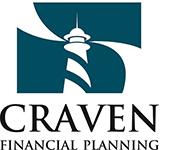Incorporating RRSPs into Your Financial Plan


Smart Strategies for Tax-Efficient Retirement
Why RRSPs Are Essential for Smart Financial Planning
Retirement planning is a critical financial decision, and for professionals, business owners, and retirees in Ontario, the Registered Retirement Savings Plan (RRSP) remains one of the most powerful tools for tax-efficient retirement planning. Whether you’re just starting to save, optimizing your retirement income, or looking for ways to reduce your tax burden, understanding how to leverage an RRSP can make a significant difference in securing your financial future.
Why RRSPs Matter for Ontario Residents
The cost of retirement is rising and relying solely on government pensions like the Canada Pension Plan (CPP) and Old Age Security (OAS) may not be enough to maintain your desired standard of living. This is where an RRSP comes into play—by offering a tax-advantaged way to save and invest for retirement while reducing your taxable income today.
According to a 2018 CIBC poll, nearly two in five Canadians see “no point” in investing in an RRSP, and almost two-thirds do not seek expert advice for retirement planning (Wealth Professional, 2018). Additionally, a 2023 survey by Edward Jones Canada found that while 51% of Canadians planned to contribute to their RRSPs—up from 33% in 2022—many remain uncertain about how to effectively use RRSPs to maximize their retirement savings (Wealth Professional, 2023). This suggest that a significant number of Canadians either underfund their RRSPs, fail to strategically withdraw funds, or don’t optimize contributions for maximum tax efficiency.
If you’re in Ontario, it’s essential to develop a structured RRSP strategy that aligns with your long-term financial goals—and that’s exactly what this guide will help you achieve.
How RRSPs Reduce Taxable Income & Build Retirement Wealth
When you contribute to an RRSP, the amount you deposit is deducted from your taxable income for that year. This reduces the amount of income subject to taxation, potentially moving you into a lower tax bracket and significantly decreasing the taxes you owe.
Example:
- Sarah, a business consultant in Toronto, earns $120,000 annually.
- By contributing $20,000 to her RRSP, her taxable income drops to $100,000.
- As a result, she pays tax on a lower income, saving thousands of dollars in taxes.
Why This Matters for High-Income Professionals & Business Owners
Ontario professionals and business owners often fall into higher tax brackets, meaning they pay more in income taxes. RRSP contributions allow them to reduce their tax burden while simultaneously growing wealth for retirement.
Tax Savings Breakdown for High-Income Earners in Ontario (2024)
- Income over $106,717 is taxed at 43.41% (combined federal & provincial rate).
- Income over $235,675 is taxed at 53.53%.
- By contributing to an RRSP, these earners immediately lower taxable income and defer taxes until retirement, when they may be in a lower tax bracket.
Example:
- John, a senior lawyer in Ontario, earns $250,000 per year.
- He contributes $30,000 to his RRSP, reducing his taxable income to $220,000.
- This moves part of his income out of the highest tax bracket, saving him thousands of dollars.
Maximizing the Benefit: Reinvesting Your RRSP Tax Refund
Another smart strategy is to reinvest the tax refund received from RRSP contributions. Instead of spending the refund, consider:
- Adding it back into your RRSP to accelerate retirement savings.
- Investing in a TFSA for tax-free growth.
- Paying down high-interest debt to improve overall financial health.
Take Advantage of RRSP Tax Deductions Today
Ontario professionals and business owners have a unique opportunity to optimize their tax savings and retirement wealth through strategic RRSP contributions. By maximizing contributions and understanding tax brackets, you can keep more of your hard-earned money while building a secure retirement.
Schedule a free consultation with Bill Craven today to develop a tax-efficient RRSP strategy tailored to your financial goals!

A common question many Ontario residents ask is: “Should I invest in an RRSP or a TFSA?” The answer depends on your income level, tax bracket, and retirement goals.
Feature | RRSP | TFSA |
Tax Deductibility | Contributions reduce taxable income | No tax deduction for contributions |
Tax-Free Growth | Investment growth is tax-deferred | Investment growth is completely tax-free |
Withdrawals | Taxed as income upon withdrawal | Withdrawals are tax-free |
Best For | High-income earners who benefit from tax deferrals | Low-income earners or those who need flexible savings |
In many cases, a combination of RRSP and TFSA contributions creates a balanced retirement plan, allowing Ontario residents to strategically manage taxable income while maximizing tax-free savings.
Why You Need a Personalized RRSP Strategy
RRSPs are not one-size-fits-all—the best approach depends on your career stage, income level, and long-term financial goals. Working with a financial planner like Bill Craven ensures that you:
- Maximize your RRSP contributions while staying within CRA limits.
- Optimize your tax deductions to lower your income tax liability.
- Develop a strategic withdrawal plan that minimizes taxes in retirement.
Maximizing RRSP Contributions for Tax Efficiency
For Ontario professionals, business owners, and retirees, maximizing RRSP contributions is essential for reducing taxes and growing retirement savings efficiently. Understanding how to contribute strategically, avoid common mistakes, and leverage employer-matching programs can help you build long-term wealth while minimizing your tax burden.
Understanding RRSP Contribution Limits & Carry-Forwards
One of the key benefits of an RRSP is that it allows for tax-deductible contributions, but there are limits set by the Canada Revenue Agency (CRA).
- 2024 RRSP Contribution Limit: The annual limit is 18% of your earned income, up to a maximum of $31,560 (whichever is lower).
- Carry-Forward Room: If you didn’t contribute the full amount in previous years, your unused room carries forward indefinitely — allowing you to catch up on contributions when you have the financial flexibility.
Example: Suppose you earned $100,000 in 2023 but only contributed $10,000 to your RRSP. Since your limit was $18,000, the remaining $8,000 can be carried forward and used in future years.
Tip: You can check your available RRSP room through the CRA My Account to ensure you’re maximizing contributions without exceeding limits.
Contribution Strategy | Pros | Cons |
Monthly Contributions (Dollar-Cost Averaging) | ✔ Helps smooth out market fluctuations. ✔ Easier to budget smaller amounts each month. | ✖ Requires consistent cash flow. |
Lump-Sum Contribution (Before the Deadline) | ✔ Allows you to maximize tax deductions at once. ✔ Ideal if you receive a large year-end bonus or have carry-forward room. | ✖ Timing risk—could invest at a market high. |
Best Strategy? If you prefer steady growth, opt for monthly contributions. If you need to lower your taxable income quickly, a lump sum before the deadline can be beneficial.
Employer RRSP Matching: Don’t Leave Free Money on the Table
Many Ontario professionals have access to employer-sponsored RRSP matching programs—one of the most overlooked tax-saving opportunities.
- How It Works: Your employer contributes a percentage of your salary into your RRSP, matching your contributions up to a set limit.
- Tax Advantage: Employer contributions are not considered taxable income, but they count toward your RRSP limit, allowing you to grow savings faster.
Example: If you earn $80,000 and your employer offers a 5% RRSP match, that’s an extra $4,000 per year contributed to your RRSP—essentially free retirement savings.
Tip: Always contribute at least enough to receive the full employer match—otherwise, you’re leaving free money on the table.
Common RRSP Contribution Mistakes to Avoid
- Over-Contributing (Triggers a Penalty)
If you contribute more than your available RRSP room, you’ll face a 1% monthly penalty on the excess amount. However, you are allowed to exceed the limit by $2,000 before penalties apply. Always track your contribution room through the CRA My Account or consult with a financial advisor before making large deposits. - Missing Employer RRSP Matching Programs
Failing to take advantage of employer-matching contributions is like leaving money on the table. Many employees either don’t enroll or contribute less than the full match amount, reducing their long-term retirement savings. It is important to always contribute enough to maximize employer matching—it’s one of the easiest ways to grow your RRSP tax-free.
Take Control of Your RRSP Contributions Today
RRSPs provide a powerful way to reduce taxable income and grow retirement savings, but maximizing contributions requires strategy. By contributing consistently, leveraging employer matching, and avoiding over-contribution penalties, you can secure your financial future while optimizing your tax savings.
Not sure if you’re maximizing your RRSP tax benefits? Schedule a free consultation with Bill Craven today to ensure your RRSP strategy is fully optimized for tax savings!
RRSP Withdrawal Strategies for a Tax-Efficient Retirement
Planning how and when to withdraw from your RRSP is just as important as making contributions. RRSP withdrawals are taxed as regular income, meaning a poor withdrawal strategy can lead to higher taxes and potential reductions in government benefits. Ontario professionals, business owners, and retirees need a well-planned approach to minimize taxes and maximize retirement income.
Understanding the Tax Impact of RRSP Withdrawals
Unlike a TFSA, where withdrawals are tax-free, RRSP withdrawals are fully taxable as regular income. The amount you withdraw is added to your annual taxable income, potentially pushing you into a higher tax bracket.
How to Minimize RRSP Taxes:
- Withdraw in Lower-Income Years: If you retire early or have years where your income is lower, withdrawing funds strategically can reduce the tax burden.
- Convert to an RRIF Gradually: Instead of large lump-sum withdrawals, converting your RRSP to an RRIF allows for structured, lower-tax withdrawals over time.
- Use Pension Income Splitting: If you’re married or in a common-law relationship, splitting RRSP income with your spouse can help balance tax liability and lower your overall tax rate.
RRSP Mistakes to Avoid & Common Pitfalls
While RRSPs are a powerful retirement tool, many Canadians make costly mistakes that reduce tax benefits or lead to unnecessary penalties. Understanding and avoiding these pitfalls can help Ontario professionals, business owners, and retirees maximize savings while staying compliant with tax rules.
Below are the most common RRSP mistakes—and how to avoid them.
1️. Over-Contribution Penalties: Watch Your Limits
Exceeding your RRSP contribution limit can result in harsh penalties. The Canada Revenue Agency (CRA) imposes a 1% penalty per month on any excess contributions over $2,000.
Example:
- Your 2024 RRSP limit is $29,210, but you accidentally contribute $31,000.
- The extra $1,790 will be taxed at 1% per month ($17.90/month) until withdrawn.
How to Avoid It:
- Check your RRSP contribution room before making deposits using the CRA My Account.
- Set contribution reminders to track automatic deposits.
- Withdraw excess contributions ASAP to stop the penalty.
2️. Withdrawing Too Early: A Costly Tax Mistake
Unlike a TFSA, early RRSP withdrawals come with immediate tax consequences. Funds withdrawn before retirement are subject to:
Withholding Taxes:
- 10% (Up to $5,000 withdrawn)
- 20% ($5,001 to $15,000 withdrawn)
- 30% ($15,001 and above withdrawn)
Added to Taxable Income:
Withdrawals count as regular income, potentially pushing you into a higher tax bracket.
Example:
- Lisa, an Ontario professional, withdraws $15,000 from her RRSP at age 50.
- $3,000 (20%) is withheld for taxes immediately.
- The full $15,000 is added to her taxable income, increasing her overall tax liability.
Alternatives to RRSP Withdrawals:
- Use a TFSA for emergency savings, as withdrawals are tax-free.
- Consider an RRSP Home Buyers’ Plan (HBP) or Lifelong Learning Plan (LLP) for tax-free withdrawals (if eligible).
3️. Not Converting to a RRIF on Time (Age 71 Deadline)
By December 31 of the year you turn 71, you must convert your RRSP into a Registered Retirement Income Fund (RRIF) or annuity. If you don’t, the CRA will treat the entire RRSP balance as taxable income, leading to massive tax consequences.
How to Avoid It:
- Convert your RRSP to a RRIF before age 71 to spread withdrawals over multiple years and reduce taxes.
- Schedule an RRSP review at age 69 or 70 with a financial advisor.
- Plan RRIF withdrawals strategically to avoid high taxes.
Avoid Costly RRSP Mistakes – Plan Ahead
RRSPs can provide major tax savings, but mistakes can be expensive. By staying informed and strategically planning your RRSP contributions and withdrawals, you can maximize your retirement savings while avoiding penalties.
Avoid costly RRSP mistakes! Schedule a consultation with Bill Craven to optimize your retirement strategy today!
Ready to Optimize Your RRSP?
Your RRSP is one of the most powerful tools for securing a comfortable, tax-efficient retirement—but only if used correctly. Whether you’re looking to maximize contributions, minimize taxes, or plan strategic withdrawals, making informed decisions today will have long-term benefits for your future.
Don’t leave your retirement to chance—take control today!
Schedule a Free Consultation with Bill Craven
✅ Get a personalized RRSP strategy tailored to your financial goals.
✅ Avoid common RRSP mistakes that could cost you thousands in penalties or taxes.
✅ Optimize your RRSP withdrawals to minimize tax and maximize retirement income.
📞 Call Now: 519-351-9411
📧 Email: bill@cravenfp.com
🌐 Visit: https://cravenfp.com/
Your future starts with smart planning today. Let Bill Craven help you build a retirement strategy that works for you!
Frequently Asked Questions about RRSPs
1. What is an RRSP and how does it work?
A Registered Retirement Savings Plan (RRSP) is a tax-advantaged account designed to help Canadians save for retirement. Contributions are tax-deductible, meaning they lower your taxable income, and investments grow tax-deferred until withdrawal, at which point they are taxed as income.
2. What are the benefits of contributing to an RRSP?
RRSPs provide several benefits, including tax deductions on contributions, tax-deferred investment growth, and structured withdrawal options for retirement. They are particularly beneficial for high-income earners looking to reduce taxable income.
3. How much can I contribute to my RRSP in 2024?
For 2024, the maximum RRSP contribution limit is 18% of your earned income, up to a cap of $31,560. Any unused contribution room can be carried forward to future years.
4. What happens if I over-contribute to my RRSP?
Over-contributions above your annual limit are subject to a 1% penalty per month on the excess amount until it is withdrawn. The CRA allows a $2,000 buffer before penalties apply, but exceeding that limit results in fines.
5. Should I contribute to an RRSP monthly or in a lump sum?
Both strategies have advantages:
- Monthly contributions help smooth out market fluctuations and make saving easier to budget.
- Lump-sum contributions can be beneficial if you receive a year-end bonus or need an immediate tax deduction before the contribution deadline.
6. What is the difference between an RRSP and a TFSA?
- RRSPs offer tax deductions for contributions but are taxed upon withdrawal.
- TFSAs do not provide tax deductions, but withdrawals are completely tax-free.
RRSPs are typically better for high-income earners, while TFSAs are ideal for lower-income individuals who want tax-free withdrawals.
7. When should I convert my RRSP to an RRIF?
You must convert your RRSP to a Registered Retirement Income Fund (RRIF) or an annuity by December 31 of the year you turn 71. If you don’t, your entire RRSP balance will be counted as taxable income in that year.
8. How do RRSP withdrawals affect my taxes?
RRSP withdrawals are taxed as regular income in the year they are taken out. Large withdrawals can push you into a higher tax bracket, so strategic withdrawals or RRIF conversions can help minimize taxes in retirement.
9. Can I withdraw from my RRSP before retirement?
Yes, but early withdrawals are subject to withholding tax (10%-30%) and are counted as taxable income. However, certain programs, such as the Home Buyers’ Plan (HBP) and Lifelong Learning Plan (LLP), allow tax-free withdrawals under specific conditions.
10. How can I get personalized advice on my RRSP strategy?
To maximize your RRSP tax benefits and retirement savings, schedule a free consultation with Bill Craven today. He can help develop a customized strategy that aligns with your financial goals.
📞 Call Now: 519-351-9411
📧 Email: bill@cravenfp.com
🌐 Visit: https://cravenfp.com/
References:
Wealth Professional. (2018, January 25). Canadians unsure about RRSP, don’t ask for help. Wealth Professional Canada. Retrieved from https://www.wealthprofessional.ca/news/industry-news/canadians-unsure-about-rrsp-dont-ask-for-help/236790
Wealth Professional. (2023, February 15). Why young Canadians are leading the charge on RRSP contributions. Wealth Professional Canada. Retrieved from https://www.wealthprofessional.ca/investments/retirement-solutions/why-young-canadians-are-leading-the-charge-on-rrsp-contributions/373831
Mutual funds, approved exempt market products and/or exchange traded funds are offered through Investia Financial Services Inc.
The comments contained herein are a general discussion of certain issues intended as general information only and should not be relied upon as tax or legal advice. Please obtain independent professional advice, in the context of your particular circumstances. This article was prepared by Bill Craven who is an Investment Funds Advisor at Craven Financial Planning a registered trade name with Investia Financial Services Inc., and does not necessarily reflect the opinion of Investia Financial Services Inc. The information contained in this presentation comes from sources we believe reliable, but we cannot guarantee its accuracy or reliability.
Related Articles

ETF Funds vs ETFs in Canada
ETF Funds vs ETFs in Canada: What’s the Real Difference—and Why It Matters to Your Money By Bill Craven B.A.,CFP,EPC “It’s easy to assume ETF Funds and ETFs are interchangeable. After all, they share the same acronym. But dig just a little deeper, and the differences can have a major

Disability Insurance for Corporation Owners in Ontario
by Bill Craven Protecting Your Business in a Crisis: Disability Buy-Sell & Wage Loss Plans for Ontario Corporation Owners Tailored insights for incorporated professionals, medical practices, and business partnerships. What would happen to your business if you suddenly couldn’t work? For many incorporated professionals, it’s a question they’ve never
- Bill Craven CFP
- Chatham financial advisor
- Craven Financial Planning
- financial planning for Canadians
- financial planning Ontario
- how to use RRSPs
- personal financial strategy
- retirement savings Canada
- RRSP retirement income
- RRSP strategy
- RRSP tax savings
- RRSP vs TFSA
- RRSP withdrawal planning
- tax-efficient investing
- wealth management Ontario
William (Bill) Craven, BA, CFP, EPC, is a seasoned financial expert with over three decades of experience in helping Canadians plan for the future with confidence. As the founder of Craven Financial Planning, Bill has built a reputation for delivering tailored financial planning and insurance strategies that align with each client’s unique goals, tax considerations, and long-term security.
Based in Chatham, Ontario, Bill is a Certified Financial Planner (CFP), Elder Planning Counsellor (EPC), and a Mutual Fund Representative with Investia Financial Services Inc. He provides trusted guidance on RRSPs, TFSAs, retirement income planning, life and disability insurance, estate bonds, and tax-efficient investment solutions.
Recognized for his integrity, personal service, and depth of knowledge, Bill works with individuals, families, and business owners throughout Southwestern Ontario to build financial confidence through personalized, values-based planning.



